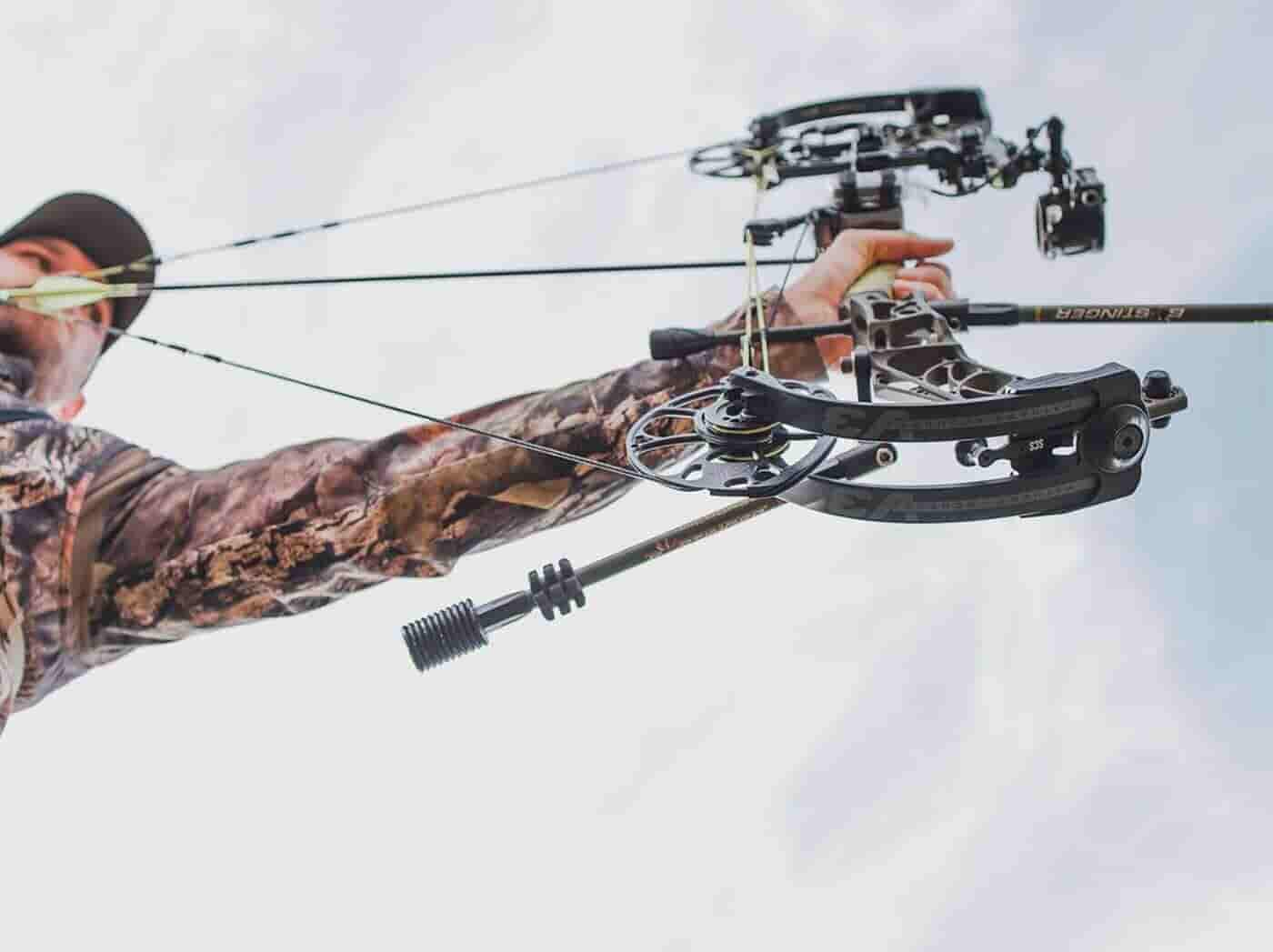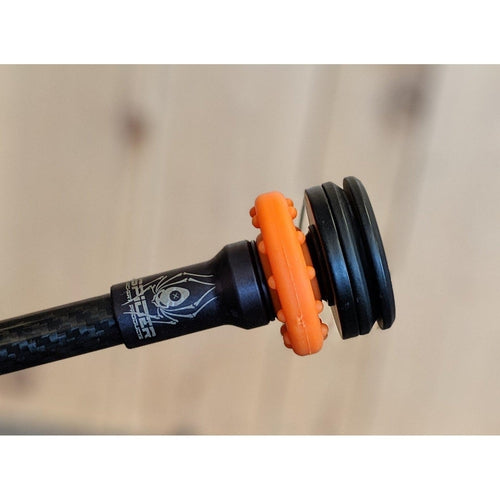Achieve Stability in Your Shot: Recognizing Archery Stabilizers
Achieve Stability in Your Shot: Recognizing Archery Stabilizers
Blog Article
Master the Art of Archery: Understanding the Relevance of a Stabilizer in Your Setup
Archery, an old sport that calls for emphasis, precision, and skill, has mesmerized individuals for centuries. Whether one is a seasoned archer or simply beginning their trip, the significance of a stabilizer in their setup can not be overemphasized. This important tool plays a significant duty in enhancing precision and boosting general performance. By understanding the advantages of utilizing a stabilizer, taking into consideration the right factors when choosing one, and properly mounting and adjusting it, archers can boost their skills to new heights. Allow us explore the intricacies of understanding the art of archery and uncover the important function that a stabilizer plays in achieving success on the array.
The Role of a Stabilizer in Archery
A stabilizer plays a vital duty in archery by enhancing balance and lowering vibrations during the shot. A stabilizer assists to neutralize these vibrations by absorbing and dissipating the power (archery stabilizer).
One of the main benefits of a stabilizer is its ability to improve balance. The weight of the stabilizer helps to distribute the weight uniformly, minimizing the pressure on the archer's arm and boosting security.
In enhancement to equilibrium, a stabilizer additionally helps to decrease torque. When an archer launches the bowstring, there is an all-natural propensity for the bow to turn in the hand. This rotation, called torque, can create the arrowhead to divert off-course. The weight and layout of a stabilizer neutralize this rotation, ensuring a much more consistent and precise shot.
Benefits of Using a Stabilizer
The use of a stabilizer in archery provides many advantages that enhance an archer's efficiency and general capturing experience. To start with, a stabilizer assists to lessen the resonances produced upon release of the arrow. These resonances can create the acquiesce torque or twist, causing unreliable shots. By absorbing and moistening these resonances, the stabilizer enhances the security of the bow, permitting for more regular and exact shots.
Secondly, a stabilizer assists to balance the bow by adding weight to the front end. This weight circulation neutralizes the all-natural tendency of the bow to tip ahead upon launch, lowering the quantity of activity and improving the archer's capacity to keep goal on target.

Lastly, a stabilizer can likewise act as a shock absorber, decreasing the shock and recoil experienced upon launch. This not just boosts the comfort of shooting however likewise reduces the threat of injury or stress on the archer's body.
Exactly How a Stabilizer Boosts Accuracy
Enhancing the precision of an archer's shots, a stabilizer plays an important duty in boosting general efficiency. archery stabilizer. By including stability to the bow, a stabilizer aids minimize the unwanted motion and vibration that can occur throughout a shot. This reduction in motion allows the archer to keep a stable purpose, causing more accurate and regular shots

Additionally, a stabilizer helps to wet resonances that take place upon release. These vibrations can cause the acquiesce shake, influencing the arrowhead's trajectory and precision. By taking in and dissipating these vibrations, a stabilizer aids to preserve the bow's security and ensure a accurate and smooth shot.
Additionally, a stabilizer can likewise aid in stabilizing the weight circulation of the bow (archery stabilizer). By including weight to the front of the bow, a stabilizer assists to balance the weight of accessories, such as quivers or sights, which may be affixed to the bow. This balanced weight circulation assists the archer preserve a regulated and stable shooting helpful hints setting, leading to enhanced precision
Aspects to Think About When Picking a Stabilizer
When choosing a stabilizer for your bow, it is very important to think about numerous factors that will add to its overall efficiency and viability for your individual shooting design. The first factor to think about is the size of the stabilizer. Stabilizers can be found in different lengths, ranging from brief to long. Longer stabilizers normally give much more stability and equilibrium, however they can additionally be heavier and more challenging to maneuver. Much shorter stabilizers, on the other hand, use better maneuverability but might give up some stability.
Another factor to take into consideration is the weight of the stabilizer. The weight official statement of the stabilizer can affect the balance of your bow.
Some stabilizers have adjustable functions, such as flexible length or flexible weights, which permit you to personalize the stabilizer to your details requirements. Carbon fiber stabilizers are sturdy and light-weight, while aluminum stabilizers supply an equilibrium between weight and strength.
Finally, it is vital to consider your shooting style and choices. Various stabilizers might work much better for sure shooting designs, such as target shooting or hunting. It is a good idea to consult with experienced archers or specialists to identify which stabilizer will best fit your individual demands. In general, considering these aspects will help make certain that you select a stabilizer that boosts your capturing experience and improves your accuracy.
Tips for Appropriately Mounting and Changing a Stabilizer
Longer stabilizers provide more security but can be less manoeuvrable, while much shorter stabilizers offer increased ability to move however might give up stability. When you have actually chosen the appropriate size, connect the stabilizer to the bow utilizing the supplied mounting equipment. Make sure that the stabilizer is firmly fastened and aligned with the bow's riser.
After setting up the stabilizer, it is needed to make adjustments to accomplish the wanted balance and shot consistency. Beginning by adjusting the weight circulation along the stabilizer. Furthermore, think about adjusting the angle of the stabilizer to fine-tune the shot.

Verdict
In conclusion, a stabilizer plays a vital duty in archery by boosting precision and decreasing bow torque. When picking a stabilizer, elements such as weight, material, and size should be thought about to meet specific requirements.
Additionally, a stabilizer can also help in stabilizing the weight circulation of the bow. By including weight to the front of the bow, a stabilizer aids to stabilize the weight of accessories, such as quivers or views, which may be affixed to the bow. Some stabilizers have flexible attributes, such as flexible length or flexible weights, which enable you to customize the stabilizer to your certain needs. Carbon fiber stabilizers are long lasting and lightweight, while aluminum stabilizers use an equilibrium between weight and rigidness.
Longer stabilizers supply more stability yet can be less manoeuvrable, while much shorter stabilizers provide raised maneuverability yet might compromise stability.
Report this page